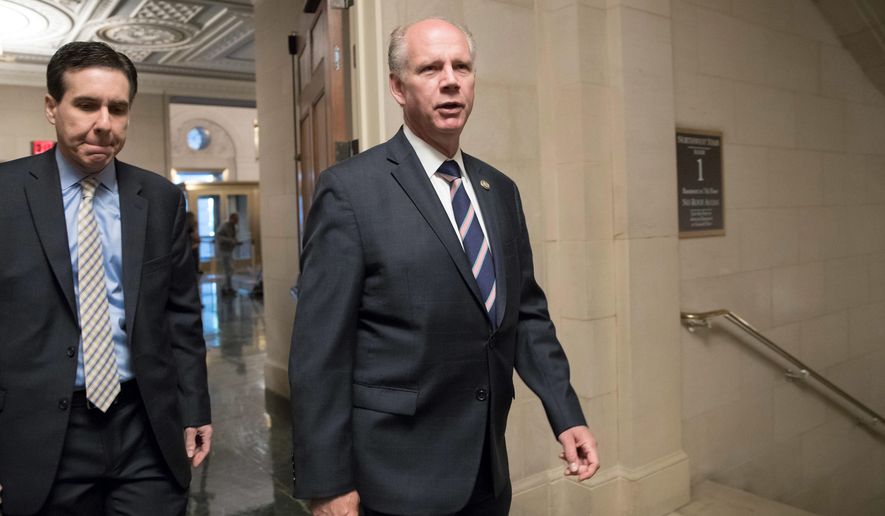Lawmakers on Capitol Hill on Wednesday will take on a chilling and chillingly effective new tactic from terror groups such as Islamic State — the use of trucks and cars as weapons of mass destruction on the streets of cities across Europe and North America.
The House Homeland Security Committee will debate a bill introduced by Rep. Dan Donovan, New York Republican, in response to last fall’s attack on a popular bike path in New York City by a terrorist who rented a truck and mowed down eight people near the World Trade Center while shouting, “Allahu akbar.” Terror-inspired deadly attacks using cars and trucks have been seen in such cities as Barcelona, Berlin, London and Nice.
“Terrorists have shifted their focus from hard to soft targets, and this change has heralded a new wave of threats,” Mr. Donovan said in an email. “Vehicular terror attacks, which were once only seen in Europe, are now being carried out in our homeland.”
Late last year, Mr. Donovan, who chairs the House Subcommittee on Emergency Preparedness, Response, and Communications, introduced the “Shielding Public Spaces from Vehicular Terrorism Act” which requires the Department of Homeland Security (DHS) to develop new tools to combat the use of cars and trucks as weapons.
“If the October vehicle attack in Manhattan taught us anything, it’s that we have to be increasingly vigilant and address evolving terrorist tactics now,” Mr. Donovan said.
The bill also seeks to bolster the Homeland Security Department’s Urban Area Security Initiative (UASI) grant program, which offer municipalities cash to tackle vital security issues in public spaces such as bus stops, bike paths and other mass-gathering locations.
The bill essentially eases access to a program launched not long after 9/11, according to a committee staffer familiar with the bill.
For 2018, $580 million worth of UASI funds are available to 32 high-threat, high-density areas. Qualifying cities can buy vehicle barriers, steel bollards and safety pickets.
When the funds were announced earlier this year, DHS Secretary Kirstjen Nielsen said the grant programs “are flexible by design and will be used to help address evolving threats.”
The program has to be. The gut-wrenching tactic has witnessed a dramatic rise recently and, while not all vehicle attacks are linked to terrorism, terror groups such as the Islamic State and al Qaeda have actively encouraged the tactic.
Counterterrorism experts point to a 2010 article in an al Qaeda magazine as a turning point. The piece called for jihadists to use vehicles as a “mowing machine, not to mow grass but mow down the enemies of Allah” and suggested using a four-wheel-drive pickups “to achieve maximum carnage.”
Last year, several attackers cited radical Islamic doctrine as their inspiration for murder.
The Manhattan attack, for instance, was carried out by Samfullo Saipov, a 29-year-old originally from Uzbekistan who told New York City investigators he was inspired by Islamic State videos.
Last year’s attacks on Barcelona’s fabled pedestrian thoroughfare of Las Ramblas, which killed 13 people, and London Bridge, where 14 were killed and more than 100 were injured, were also connected to Islamists.
The 2016 Bastille Day attack in Nice, in which Mohamed Lahouaiej Bouhlel barreled a 20-ton truck into crowds gathered to watch fireworks — killing 84 and wounding more than 200 wounded — was heralded by the Islamic State as retaliation for France’s role in fighting the terror group in Syria and Iraq.
• Dan Boylan can be reached at dboylan@washingtontimes.com.




Please read our comment policy before commenting.